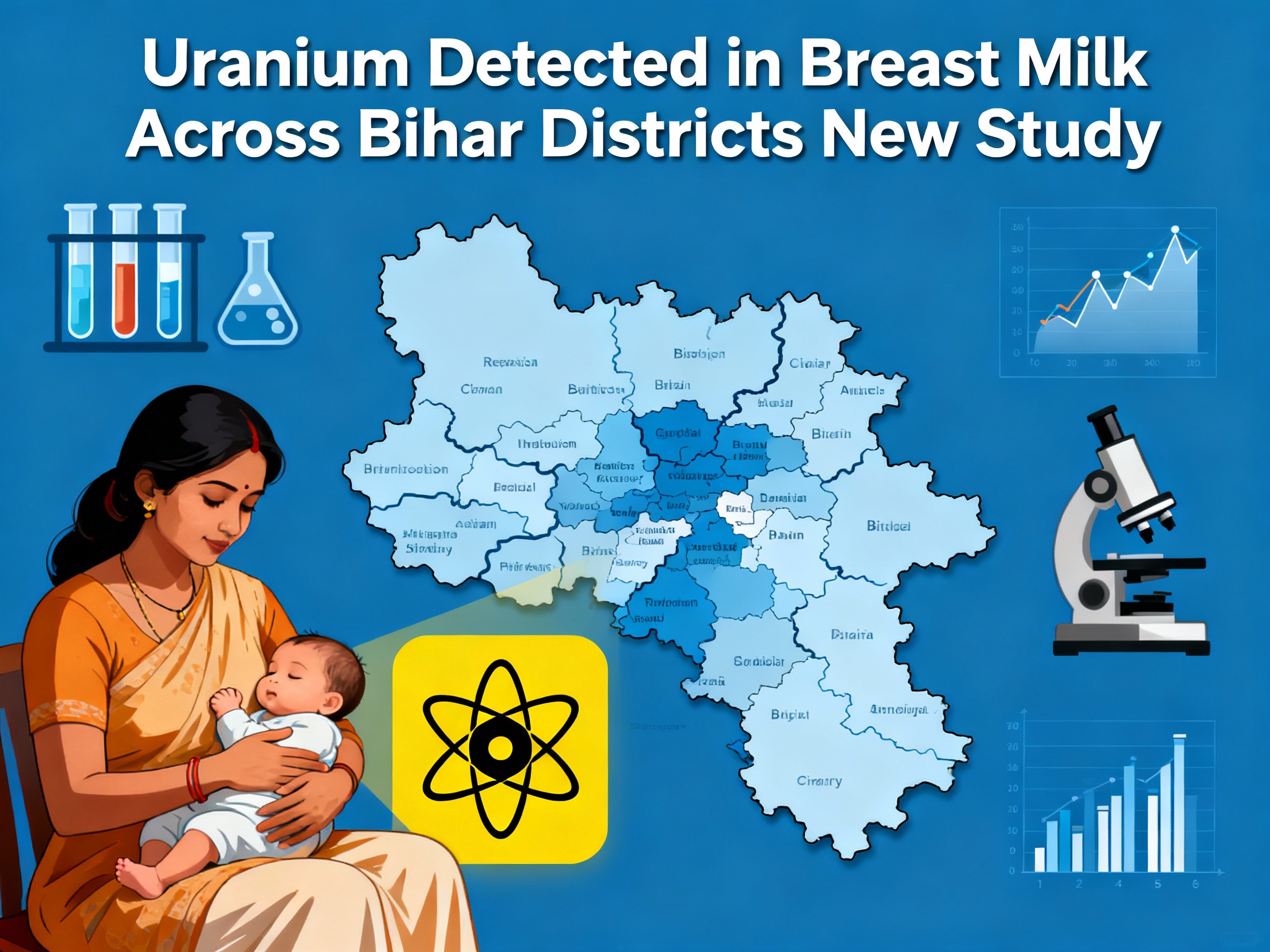A recent scientific study found uranium (U-238) in breast milk samples from 40 lactating mothers across multiple districts in Bihar.
Every sample tested showed traces of uranium, with Khagaria district recording the highest average contamination and Katihar the highest individual level.
Although uranium concentrations were below global safety limits, 70% of infants had a hazard quotient above 1, indicating possible non-carcinogenic health effects from prolonged exposure.
Infants are particularly vulnerable to heavy metal contamination because of their limited ability to excrete harmful substances, raising concerns about risks to kidney and neurological development.
Potential long-term effects include reduced IQ and developmental delays in children exposed to uranium through breast milk.
Experts advise most uranium absorbed by mothers is excreted in urine rather than accumulating in breast milk, so current findings do not justify discontinuation of breastfeeding.
Uranium contamination in groundwater is a widespread issue in India, with the element found in 18 states due to both natural geological factors and human activities like mining and fertilizer use.
The study highlights the need for consistent and broader biomonitoring to track exposure, particularly in areas reliant on groundwater for drinking and household use.
The World Health Organization (WHO) provisional safety guideline for uranium in drinking water is 30 µg/L, serving as an important reference threshold.
Researchers plan to expand future studies to other states and examine additional contaminants, including pesticides, to better protect maternal and child health.

Uranium Detected in Breast Milk Across Bihar Districts New Study
A new study finds uranium traces in breast milk across Bihar, with levels below safety limits but potential health risks for infants prompting calls for wider biomonitoring and research on heavy metal contamination in India.


